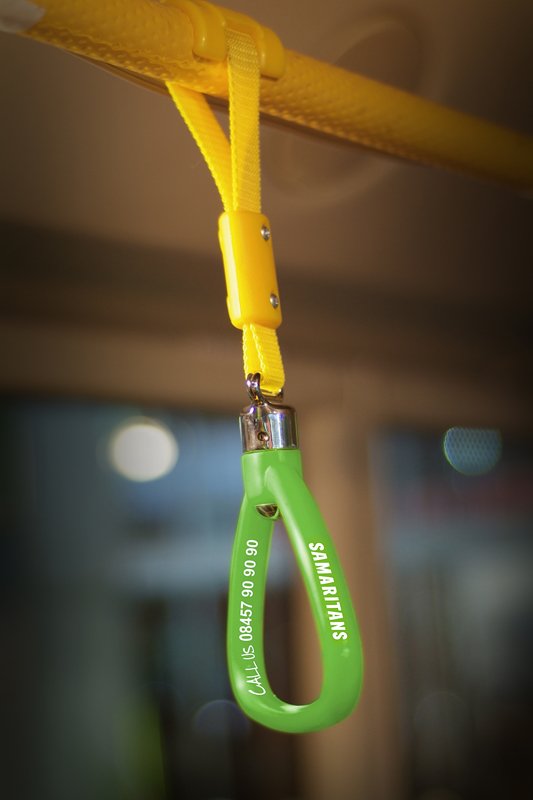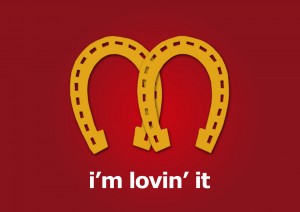Cleaning up the Chip Shop
So, the nominations for the Chip Shop Awards have been released, prompting absolutely nobody to exclaim ‘I can’t believe Tom’s ads didn’t make it!’ I don’t care though. My Mick Philpott/flame-grilled Whopper ad is going to sweep the board next year.
Chip on their shoulder
The Chips site now features several warnings about the offensiveness of the ads submitted – not a bad idea, considering the astonishing number of paedophilia-themed entries this year. But then again, it might have something to do with a recent piece in Ad Age that gave the Chips a real battering, calling them out for ‘celebrating offensive spec work’, positioning them as existing ‘solely to highlight crude ads’ (not really fair) and describing featured brands as ‘targets’ and ‘victims’ (rather than, say, beneficiaries of free publicity). It also lumped avowedly fake Chips ads in with unauthorised work for Ford by creatives at JWT India that somehow escaped and ended up in an awards show.
A Coca-Cola spokesman, helpfully tipped off to the brand’s presence in the Chips by Ad Age, provided a sniffy quote about the unauthorised use of trademarks. None of the senior, respected creatives who judge the awards were asked to comment, although the agencies where they work were meticulously named, and described as putting their ‘stamp of approval’ on the ‘fake ads process’. Finally, the Chips’ organisers got the old ‘did not respond by press time’ treatment. (I’m guessing the deadline was flexible enough to wait for Coke.)
Joke not funny any more
Why turn on the Chips now? With the air of one finding slugs under a stone, Ad Age loftily spoke of the awards being ‘around for years largely under the radar’. This is surely disingenuous. If I wanted to keep my ad awards quiet, I wouldn’t get Dave Trott to judge them, build a showcase website or throw a massive awards party.
Perhaps the real reason is a backlash against fake ad culture, particularly the more offensive end of it. And although Ad Age doesn’t mention it, the tipping point may well have been the Oscar Pistorius/Nike competition run by The Drum in partnership with the Chips and One Minute Briefs.
Top copywriter Mike Reed roundly criticised the competition in this piece (which is well worth reading, as are his follow-up posts). He described the entries as ‘incredibly crass, sometimes nakedly violent, misogynistic “jokes”’, which I think is fair. Egged on by the organisers, crazed by the thrill of transgression and anxious to outdo each other, creatives went completely off the deep end. It was Lord of the Flies with laptops.
Mike isn’t advocating censorship, and neither am I. Contests like this shouldn’t be banned; it’s just that they are not particularly edifying. Nobody really wants to see talented creatives, whose work could enrich our culture, losing their way like this.
Creative cynicism
The problem for the Chips is their oil-and-water mix of evangelical enthusiasm and postmodern amorality. On one level, they are indeed about ‘fostering and recognising creativity with no boundaries and no rules’, as their website claims. But at their wilder fringes, they’re a profoundly cynical exploitation of brands and news events to get publicity, both personal (for the creatives) and corporate (for the awards).
Faced with criticism, the Chips’ organisers scoff ‘of course the ads are fake’. But they still profit from the confusion in people’s minds, which is completely understandable in many cases. After all, plenty of unintentionally funny or deeply offensive genuine ads are not that different from Chips entries. When the parodies are so technically competent and visually convincing, it’s no wonder casual observers are taken in – or that Ad Age felt able to go with its po-faced faux-exposé.
Ad Age added a second helping of hypocrisy by sanctimoniously decrying the ads while reproducing them at the same time. Like paparazzi shots of the royals, fake ads can bring you hits and shares even as you bemoan their existence. (Yes, I’m aware of the irony of me doing practically the same thing here.)
A sense of being beyond the pale gives the Chips their appeal – arguably, they last thing they want is applause from the mainstream trade press. But things could go awry if the offensive stuff starts to dominate their public profile.
Things like the Pistorius contest don’t help, because they cross the line from passively accepting dodgy content to actively inviting people to create ads on themes chosen precisely because of their sensitivity. Such miscalculation gives the impression that the Chips see notoriety, rather than creative brilliance, as their most direct route to success. (Remember the Chips are a commercial venture: you pay to enter.)
Samples of our work
As I’ve noted, much of the work submitted to the Chips is not remotely offensive. It is just good creative work that could plausibly run, but didn’t for one reason or another. At its best, it evokes a warm smile rather than a cold snigger.
Good, non-provocative Chips ads use their chosen brands in a generous and constructive way. The guiding sentiment is ‘look what you could do if you were just a little braver’. They borrow equity from the brands, but they return it with interest, having invested it in riskier stocks than the brands’ owners would ever consider. I would put Coolpink’s ambient media for the Samaritans (right) in that category.
Music offers interesting parallels. There’s a long history of acts sampling other people’s work (see this great account by Dorian Lynskey). This appropriation can be cynical hijacking, enraptured homage or maybe a bit of both.
Probably the closest musical analogy to fake ads is the publicly released mixtape. On Nostalgia, Ultra, Frank Ocean added his own vocals to samples or entire tracks from a range of acts including Coldplay and The Eagles. The results were stunning, introducing an incredible new talent while breathing new life into familiar songs.
Nostalgia, Ultra was only released as a free download, so Ocean didn’t profit directly from his work. However, its popularity meant that anticipation for his ‘real’ debut, Channel Orange, was intense.
In the same way, creatives can build their reputation for handling real briefs by working on fake ones. Arguably, it’s no different from showing college coursework to get a first job.
Feel the love
The lack of royalties at stake didn’t stop The Eagles from phoning their lawyer over the wholesale appropriation of ‘Hotel California’. But Don Henley’s grumpy noises are ultimately irrelevant. However banned or bemoaned, Nostalgia, Ultra would still be beautiful.
The true value of a cultural artefact is not its legitimacy by any societal or legal standard, but its intrinsic aesthetic worth. If it makes life ‘better’, it is a ‘good’ work of art. It may be hard to agree what constitutes ‘better’ and ‘good’, but that doesn’t invalidate the argument.
The point about Nostalgia, Ultra was that it was done with love. Musicians can sample in a way that embodies contempt or derision for the original track, but the result is rarely very entertaining or enduring. By sympathetically crafting a new lyric and melody for ‘Strawberry Swing’, Ocean wasn’t riding on Coldplay’s coattails like some sort of neo-soul Jive Bunny. He was so fascinated by the song he chose that he wanted to recreate it, inhabit it, become it somehow.
This is the fascination of sampling, and also of the fake ad. Technology lets us arrogate distant cultural roles for ourselves and mingle them with our own. But with such power comes responsibility. It’s our duty to use the original music, or the original brand, with whatever respect it deserves. And if we do futz about with it, we should try to do it warmly and inclusively, not cynically or cold-heartedly. To laugh with the brand, rather than at it, in other words.
A practical suggestion…
In a comment on the Ad Age piece, Chips founder Gordon Young pointed out that ‘our entrants do not even pretend to represent the clients, a point which most would deem obvious’.
It certainly was obvious for the example he cited (a McDonald’s spoof featuring horseshoes, right). But it’s far less evident when an isolated JPEG of a more plausible ad is doing the rounds. Also, marketing insiders probably underestimate the credulity of casual viewers or non-initiates. All of which leaves the Chips open to the charge of cynically profiting from audience confusion at best, or maliciously making mischief at worst.
One solution to this would be to ‘watermark’ each entry before publication. For example, the Chips logo could appear in a triangular flash in the corner of each image or video. This would signal unequivocally that it was an unauthorised parody, wherever it ended up on the internet. It would also have the handy side-effect of building the Chips brand and driving interest in the competition.
…and an editorial one
Another approach would be for the Chips to renew, or rediscover, its values. Without jettisoning the humour or the satire, it could do more to highlight and promote the more thoughtful entries to the awards, so the Chips don’t become a byword for immaturity. Obviously, contests predicated on celebrity murders probably wouldn’t form part of this initiative.
Categories like ‘Best work for a brand you haven’t a hope of winning’ could be restricted to ads that could plausibly run, excluding manifestly peurile ads that would never get within a mile of a billboard. (This year’s entries included several Pistorius-themed efforts, although none were nominated.) Clearly, that would require some editorial judgement. But it would make it clearer that the Chips are mainly about great work, with a few gags thrown in.
This post probably makes me sound dreadfully fuddy-duddy, possibly even reactionary. But I think stolen goods shoulds be handled with great care. Otherwise, the work we do with them is destructive, not creative.
Tags: Ad Age, Chip Shop awards, Coldplay, Dave Trott, Frank Ocean, Gordon Young, Jive Bunny, Nostalgia Ultra, One Minute Briefs, Oscar Pistorius, Strawberry Swing, The Drum, The Eagles

